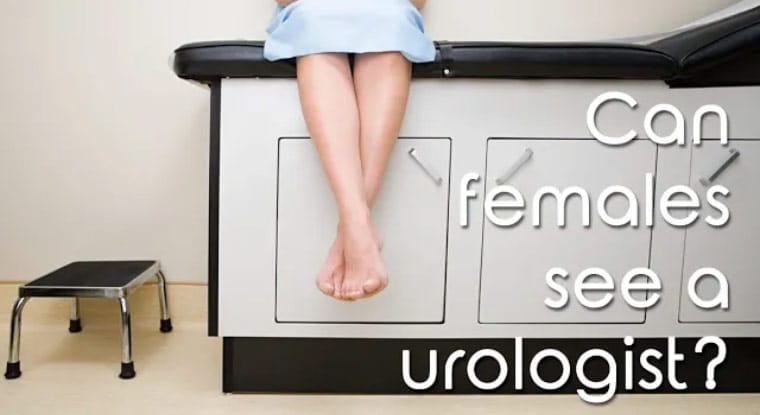Drs. Jay and Bassel, board-certified urologists in Naples and Palm Harbor, FL, respectively, talks about addressing common female urology problems.
Continue readingCommon Female Urology Problems
My name is Yaser Bassel, I’m a board certified urologist with Advanced Urology Institute. We see a lot of women, in particular for issues with incontinence or involuntary loss of urine. And there are multiple reasons for having that
Continue readingCommon Urologic Conditions Are Treatable
The urinary system of the human body regulates, manages and eliminates urine waste. The organs in this system are the kidneys, ureters, bladder and urethra. But as with any organ or system of the body, the urinary system can have problems, commonly referred to as urologic diseases or urologic problems.
You can have urologic problems regardless of your age, ethnicity or gender. And when urologic conditions occur, in both men and women they have a direct effect on the urinary tract and how urine is expelled from the body. In men, urologic problems can also affect the reproductive organs.
Signs that you have urinary tract problems:
- Blood in urine
- Loss of bladder control
- Pain or burning sensation while urinating
- Pain in the lower back, stomach or groin (kidney stones)
- Trouble having or keeping an erection
- Enlarged prostate
- Difficulty urinating
- Fever
- Chills
- Pain in genitals
Urologic conditions are treatable
Urology is a dynamic and advanced field. Urologists know how to treat many urologic diseases, including cancer of the prostate. The first step in any successful treatment is to see a urologist on time. Do not delay. As soon as you experience any problems, visit a urologist for a medical exam.

Common urologic conditions
(1) Urinary Tract Infections (UTIs)
Urinary tract infections (UTIs) are the most frequent type of urologic condition, although they occur more commonly in women than men. Close to 60% of women and 12% of men experience UTIs at some point in their lives. These infections are easily treated with antibiotics, but the treatment should begin as soon as possible to avoid further infection and prevent complications.
(2) Urinary incontinence
Although many people resist seeking help because of embarrassment, urinary incontinence is treatable in most cases. The cause is usually either an overactive bladder (urge incontinence) or stress incontinence. Typically, urge symptoms come from the bladder wall and detrusor muscle and mucosa, while stress symptoms are due to the incompetence of the bladder neck or urethral sphincter.
The diagnosis of urinary incontinence can be reached through a careful patient history, thorough examination and proper tests. You may need bladder retraining, controlled fluid intake, reduction in caffeine intake, or deliberate delayed voiding to treat the symptoms. Your doctor can also recommend medication or perform corrective surgery.
(3) Pelvic Floor Dysfunction
Pelvic floor muscles support the bladder, vagina and rectum. At some point in life, particularly after childbirth, pelvic floor muscles can become irritated or inflamed. Since the pelvic floor has to relax during urination, having pelvic floor dysfunction can cause pain or difficulties. The problem is often treated through pelvic floor exercise, but when the exercises are ineffective, vaginal medications or muscle injections can be used.
(4) Prostatitis
Many urological problems in men are linked to the prostate. Prostatitis is the inflammation or abnormal swelling of the prostate. The most common symptoms of prostatitis are painful urination, fever, chills, abdominal pain, and pain in the lower back or pelvic region. If you are diagnosed with prostatitis, your doctor will recommend antibiotics to reduce the swelling and restore your prostate to normal size.
(5) Bladder and prostate cancer
The PSA test and prostate exam are great ways to check on your prostate health. Should cancer be found in your bladder or prostate, your urologist will offer lifesaving care. Prostate cancer is the second leading cause of cancer-related deaths in men. It results from the abnormal and rapid growth of prostate cells.
Prostate cancer is successfully treated when detected early, which is why men are encouraged to get checked once a year. In fact, the recommended treatment depends on the time of detection, and may include radiation, surgery or regular surveillance. Today, robotic surgery has helped to reduce the hospital stay for kidney, bladder or prostate cancer surgery to just a few days, or just one day.
(6) Prostate enlargement (BPH)
The prostate grows as you age. Over time, you may have to wake up at night to go to the bathroom or you may not be able to produce the stream of urine you once did. When diagnosed with BPH, your urologist will use various techniques to relieve the obstruction caused by the enlarged prostate. These techniques include consistent monitoring, medications, and in some cases surgery.
Your urologist may also recommend the Rezum procedure—which uses heated water vapor to shrink the enlarged prostate tissue—or the green light and thulium laser vaporization techniques, transurethral resection of the prostate, minimally-invasive thermotherapy, or a UroLift. You will likely return home the same day as one of these procedures.
(7) Erectile dysfunction (ED)
This is a common condition as men grow older. When a man in his 40s or 50s notices that his erections are no longer what they used to be, he should talk to a urologist. Erectile dysfunction is the difficulty in achieving or maintaining an erection for sexual intercourse.
Although not fatal, it can cause stress, embarrassment and a strain on your relationship. Urologists will help you determine the underlying conditions and recommend treatments. Your urologist may prescribe medications—such as PDE5 inhibitors Cialis and Tadalafil—penile injections, a penile pump or, as a last resort, penile implant surgery.
(8) Kidney and ureteral stones
Kidney and ureteral stones occur when crystal-like particles in urine develop and grow into larger masses. As the stones pass along the urinary tract, they can get blocked and cause pain. Although most stones are passed naturally, larger stones may require surgery or specific procedures to break them.
One of the most common treatments is the Extracorporeal Shock Wave Lithotripsy (ESWL) technique in which sound waves are used to break up stones into smaller pieces. Also, since kidney stones can recur, patients often need long-term care. Your urologist will advise you on how to prevent kidney stone formation and how to best manage any potentially painful stones that develop.
At Advanced Urology Institute, every day we help people solve problems they may be hesitant to talk about. Since these problems are distressing or awkward to discuss, our goal is to help make you comfortable. We are proud of the long-term relationships we enjoy with our patients. Our knowledgeable urological specialists provide carefully tailored and confidential care. At AUI, patients get a proper diagnosis and the correct treatment, and we are willing to answer any questions you may have about your health.
If you suspect you have a urological problem, we encourage you to make an appointment at one of our many locations. For additional educational resources on urologic conditions, visit the Advanced Urology Institute website.
What Female Urology Conditions Can Dr. Jonathan Jay Treat?
The Two Most Common Female Urology Problems
Although it can feel embarrassing to discuss them with your doctor, problems with your kidneys, bladder and other parts of the urinary system are very common and are usually highly treatable. For women, two of the most common problems are urinary tract infections (UTIs) and urinary incontinence.
Urinary Tract Infection
 A urinary tract infection is an infection of a part of the urinary system which includes the bladder, kidneys, ureters and urethra. A UTI can occur when bacteria enters the urinary system, usually via the urethra. Symptoms of a UTI include a strong, constant need to urinate, a burning sensation during urination, and urine that is cloudy or pink or red-tinged and has a strong smell. There also may be pain around the pelvis. Although UTIs are usually not serious, if the infection spreads from the bladder into the kidneys, complications can occur. If you are diagnosed with a UTI, your doctor most likely will prescribe antibiotics to help clear up the infection.
A urinary tract infection is an infection of a part of the urinary system which includes the bladder, kidneys, ureters and urethra. A UTI can occur when bacteria enters the urinary system, usually via the urethra. Symptoms of a UTI include a strong, constant need to urinate, a burning sensation during urination, and urine that is cloudy or pink or red-tinged and has a strong smell. There also may be pain around the pelvis. Although UTIs are usually not serious, if the infection spreads from the bladder into the kidneys, complications can occur. If you are diagnosed with a UTI, your doctor most likely will prescribe antibiotics to help clear up the infection.
UTIS are more common in women than men because women have shorter urethras. There are easy steps you can take to prevent getting a UTI. Drinking plenty of liquids, wiping from front to back after using the restroom, and urinating soon after sexual intercourse are all important preventative measures you can take to reduce your risk of developing a UTI.
Incontinence
Urinary incontinence, or the involuntary release of urine, is also a common problem for women, especially those who have given birth or have gone through menopause. These life events weaken the pelvic floor, making muscle control around the bladder more difficult. Incontinence also can be caused by weak or overactive bladder muscles or nerve damage.
Incontinence can vary in severity. For some women, this means only a few drops of urine being released when they cough or laugh. Others may experience a sudden urge to urinate and lose control of their bladders before they have time to get to a restroom. This can cause feelings of embarrassment and keep women from participating in activities they enjoy. Thankfully, urinary incontinence is very treatable. If it is becoming a major nuisance in your life, talk to your doctor about specific treatment steps to permanently help deal with the issue rather than addressing the symptoms.
Although problems with the urinary system can feel embarrassing, it is important to remember that you are not alone and that these issues are treatable. The physicians at Advanced Urology Institute are here to help with any urological issues you may be facing. For more information, visit the Advanced Urology Institute website.
Can females see a urologist?
There is a misconception that urologists only see male patients. In fact, over 40 percent of patients seen by urologists are female. Urologists are specialists in treating disorders of the urinary tract — the system of tubes, muscles and organs that process, convey and eventually expel urine from the body. So when women develop urological issues, such as loss of bladder control, pelvic organ prolapse and incontinence, the best doctor to treat them is the urologist. Warning signs of issues involving the urinary system include:
- 1. Frequent urge to urinate.
- Leaking urine.
- Frequent urination, particularly at night.
- Pain in the side or back.
- Discomfort or burning sensation when urinating.
- Pelvic pain
- Blood in urine
Apart from treating kidney stones, urologists frequently tackle the following issues in women:
1. Loss of bladder control
 Females may have bladder control problems at any age. Also called urinary incontinence (UI), loss of bladder control is a common problem in women and they are twice as likely to have the problem as men. There are different types of urinary incontinence. For example, women who can’t hold urine as they cough, sneeze or exercise are said to have stress incontinence. This type of UI occurs when the muscles supporting the bladder are weakened by pregnancy, childbirth, aging or other factors.
Females may have bladder control problems at any age. Also called urinary incontinence (UI), loss of bladder control is a common problem in women and they are twice as likely to have the problem as men. There are different types of urinary incontinence. For example, women who can’t hold urine as they cough, sneeze or exercise are said to have stress incontinence. This type of UI occurs when the muscles supporting the bladder are weakened by pregnancy, childbirth, aging or other factors.
Overactive bladder is another type of urinary incontinence that is characterized by a strong, sudden and uncontrollable urge to urinate even when the bladder is not full. Apart from the need to reach the bathroom quickly and to pass urine 8 or more times within 24 hours, overactive bladder can cause embarrassing urine leaks and compel women to avoid certain activities and things they would like to enjoy.
2. Recurrent urinary tract infections
Women are more susceptible to recurrent urinary tract infections than men because of anatomical differences. Most women will have a urinary tract infection at a certain point in their lives. The infections occur when bacteria get into the urinary tract and are often characterized by burning sensation or pain during urination, sudden urge to pass urine, blood in urine or trouble urinating. Recurrent UTIs can lead to complications and require prompt, proper treatment.
3. Fallen bladder
In women, the bladder is kept in position by tissues called pelvic muscles. But in cases where these tissues (wall between bladder and vagina) are too stretched or weakened to hold the bladder in position, the bladder may fall into the vagina — a condition known as bladder prolapse or cystocele. A fallen bladder may be caused by aging, childbirth, lifting heavy objects, menopause, chronic coughing, obesity or previous pelvic surgery, and may lead to urinary incontinence, urinary tract infections or overactive bladder if not treated. Surgery is typically required to correct a fallen bladder.
4. Painful bladder syndrome
Also called interstitial cystitis (IC), painful bladder syndrome is an uncomfortable and upsetting condition accompanied by lower belly and bladder discomfort. Patients tend to feel that their bladder is always full and often feel the urge to pass urine several times per day, even up to 60 times in one day. The condition can badly interfere with daily activities, forcing affected women to avoid traveling far away from home and to skip social events. It also can make sex painful or uncomfortable.
As urologists, our job is to figure out what kind of bladder problem a woman has, its underlying cause and the appropriate treatment for it. With the right treatment, which may include pelvic muscle strengthening exercises, medication, injections, implanted devices and surgery, most women are able to regain their bladder control and recover from their condition. And even for conditions that have no cure, such as interstitial cystitis, treatment tends to ease symptoms and boost the quality of life.
At Advanced Urology Institute, we see women with many different urological issues. Our aim is always to help them enjoy life and all activities they’d want to engage in by eliminating awkward urine leaks and the pain and discomfort associated with these conditions. If you are a woman who is tired of having embarrassing accidental urine leakage, check with us about effective treatment. For more information on the diagnosis and treatment of urological issues in women, visit the “Advanced Urology Institute” site.






 One of the inevitable consequences of aging in women is urinary problems. With increasing age, the pelvic floor muscles—a group of muscles that support
One of the inevitable consequences of aging in women is urinary problems. With increasing age, the pelvic floor muscles—a group of muscles that support 
